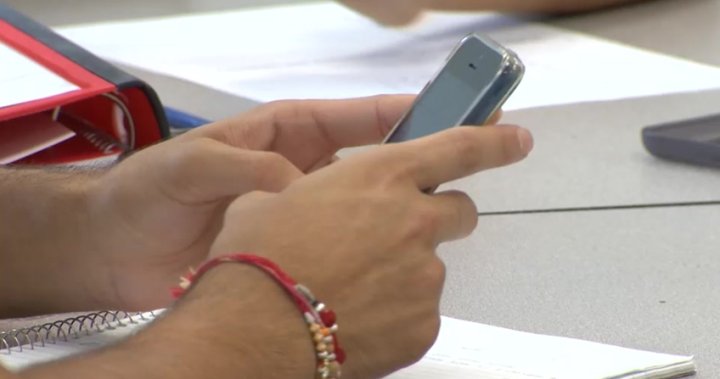Many provinces in Canada are implementing restrictions on cellphone use in schools, with at least five provinces planning to introduce these measures in the upcoming fall semester. Quebec, B.C., Alberta, Ontario, Nova Scotia, and New Brunswick have announced plans to prohibit students from using their cellphones during class time. This move is expected to benefit student learning by reducing distractions. Jennifer Flanagan, CEO of Actua, a STEM-focused charitable organization, emphasizes the importance of dedicated learning time in the classroom and believes that pausing cellphone use during class is a positive step.
The rules around cellphone use vary depending on the province. In Quebec, restrictions are specifically for the classroom, allowing students in public schools to use their phones between classes but not during instructional time. Ontario, Nova Scotia, and New Brunswick have similar policies requiring phones to be in silent mode and out of view during school hours. In Ontario and Nova Scotia, younger students must store their phones until the end of the day, while secondary students may have limited use during lunch or between lessons. B.C. is implementing a “bell-to-bell” restriction on cellphone use in classrooms, while Alberta allows exceptions for specialized learning or health needs.
The implementation of cellphone restrictions in schools is influenced by the need for parental buy-in and the growing recognition of the impact of devices and social media on academic development. Sachin Maharaj, an educational leadership professor at the University of Ottawa, believes a tiered approach to restrictions is more feasible, as it considers parents’ roles in providing devices to students and their need for communication. Provinces are also responding to research findings that link declining academic performance among students to technological devices and social media.
Some provinces have delegated the implementation of cellphone policies to school boards and districts, allowing for community consultations and input from various stakeholders. Maharaj believes that involving parents, teachers, and students in creating these policies can help establish buy-in and ensure effective implementation. While it remains to be seen if other provinces will adopt similar initiatives before the start of the school year, Flanagan notes that these restrictions are sparking important conversations about online safety, digital citizenship, and healthy technology habits, emphasizing the need to educate students about responsible online behavior.
Overall, the introduction of cellphone restrictions in schools across Canada reflects a broader effort to promote focused learning environments, combat distractions, and address the impact of technology on academic performance. By setting guidelines for cellphone use during class time, provinces aim to create a conducive learning environment for students while recognizing the role of parents in supporting these measures. The ongoing conversation about online safety and digital literacy underscores the importance of equipping students with the skills and knowledge needed to navigate the digital world responsibly and effectively.


